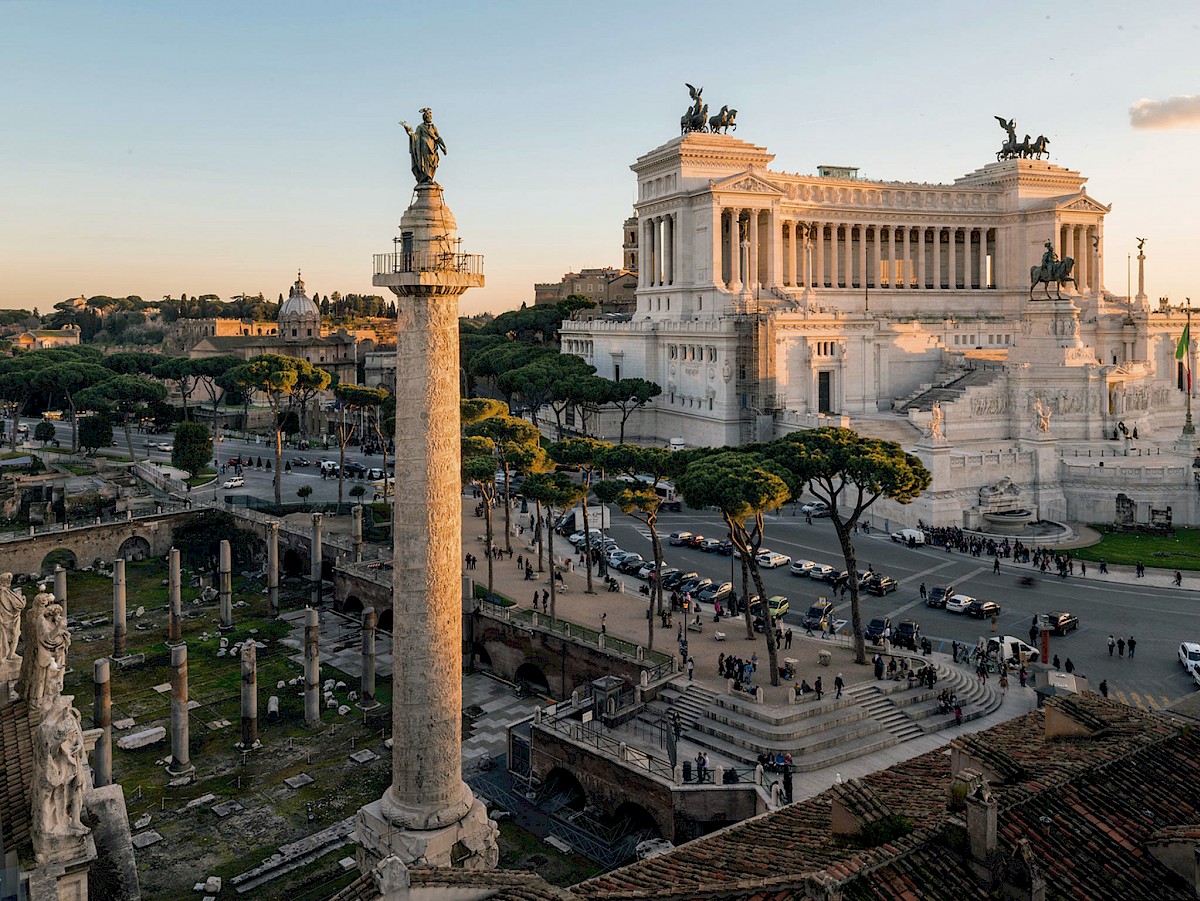

In 113 CE, the Roman Empire had reached its pinnacle. The ever-expanding empire sprawled across Italy, Spain, Britain, Greece, Egypt, and much of Southern Asia. The last holdouts against the empire were the Dacians, living in what is now Romania. For years, the Dacians had harassed and pushed back the Roman border, but their independence was finally and utterly ended by the Roman soldier-emperor Trajan. Trajan was not a politician, he was a tactician, a military leader raised in the rank of file of the Roman army. From 101-102 and 105-106 CE, Trajan led two campaigns across the Danube river into Dacia in a bloody war of attrition, finally destroying their armies and annexing it as a province of the Roman Empire.
Trajan returned to Rome triumphant, but with a political conundrum. The urban, multicultural population of Rome was suspicious of Trajan’s bloody conquest, both for its brutality and its great expense. Trajan needed some good PR, so to celebrate his victory, he declared a 100 day festival, paid for by the half a million pounds of gold he brought back from the Dacian mines. To tell the story of his victory, a massive column was constructed, 30 meters tall, made from 20 Carrara marble drums, each weighing 32 tons. Around the column is a spiraling relief sculpture depicting the events of the Dacian wars across and 155 scenes and 2,662 figures.
Trajan’s column is an architectural masterpiece, and it’s a brilliant piece of propaganda. Though the Dacian wars were bloody and long, very few scenes of violence appear on the column. Instead, soldiers are depicted raising bridges, conducting ceremonies and sacrificing to the gods. Trajan himself appears 58 times as a heroic protagonist and personification of “justice, clemency, moderation, and restraint.” Trajan’s propaganda appears to have worked. He was named optimus princeps, ‘best ruler’ by the Roman senate, and is remembered for his construction of public buildings and philanthropic efforts. Within the glossy marble confines of Rome, it was forgotten that progress was built on the graves of the Dacians.
Cover image CC BY-SA 4.0 Joaquim Alves Gaspar
...
Got questions, comments or corrections about Trajan's Column? Join the conversation in our Discord, and if you enjoy content like this, consider becoming a member for exclusive essays, downloadables, and discounts in the Obelisk Store.

Trajan’s Column, the ruins of Trajan’s Forum, and at the right a modern monument commemorating Victor Emmanuel II, the first king of a united Italy. Photo by Kenneth Garrett